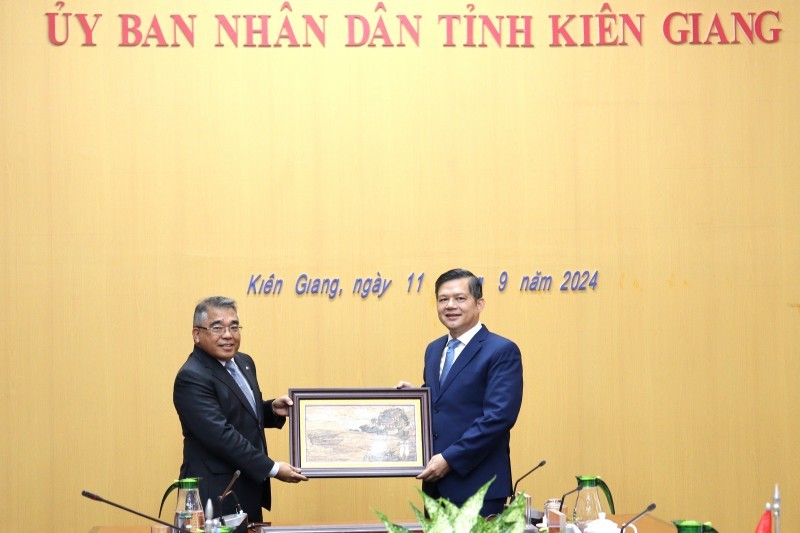A Trip To The Past: Visit The Century-Old Spanish Colonial Town In Philippines
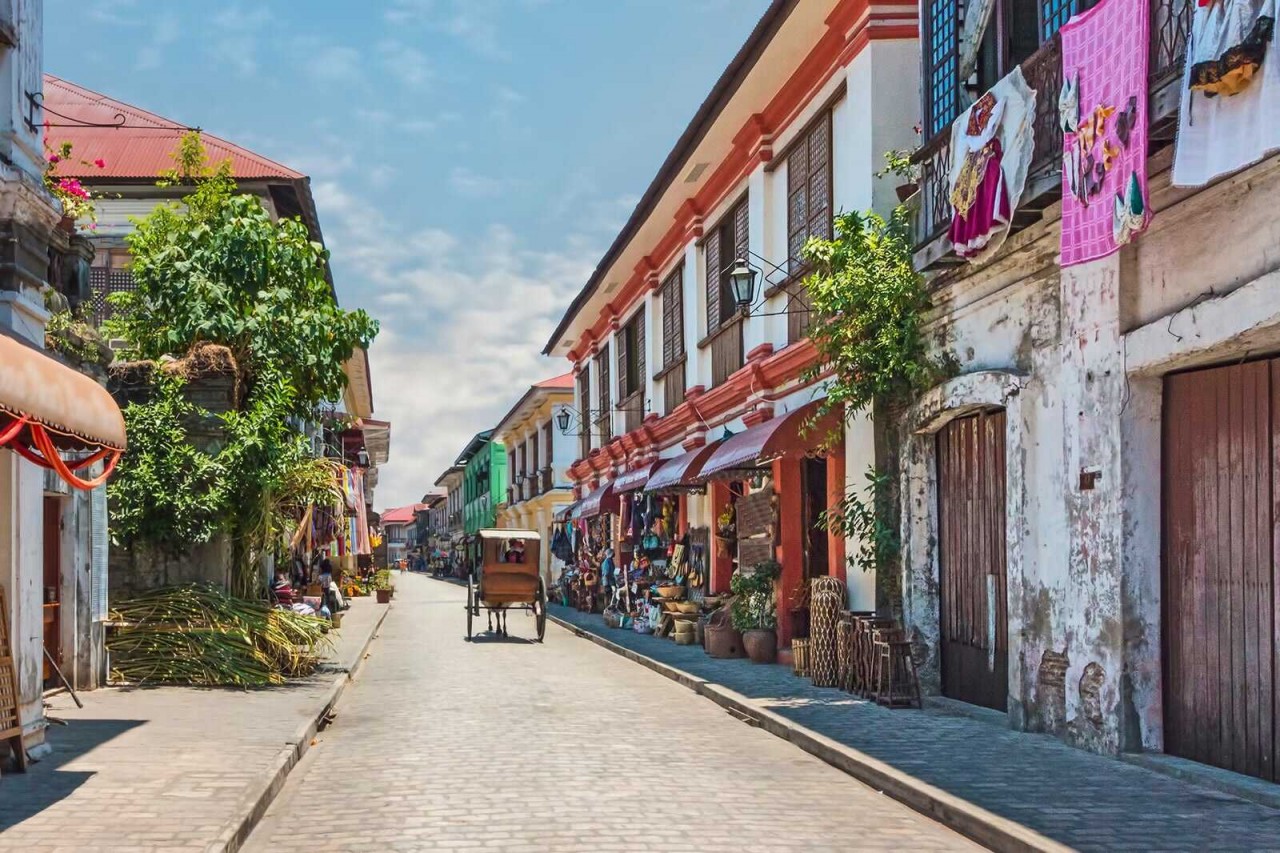 |
| Photo: Travelphilippines |
Vigan, officially the City of Vigan (Ilocano: Siudad ti Vigan; Tagalog: Lungsod ng Vigan), is a 4th class component city and capital of the province of Ilocos Sur, Philippines. According to the 2020 census, it has a population of 53,935 people.
Heritage houses, cobblestone streets, kalesas, historic attractions, and delicious cuisine—these spell out Vigan City.
As one of the best-preserved Spanish colonial towns in the world, Vigan City has a unique charm that anyone would be attracted to. In fact, you might not see much of its classic architecture and matching cobblestoned streets elsewhere in the Philippines. Plus, there are food and attractions of interest in and around the city that surely make the 8 to 10-hour road trip so worth it.
Located on the western coast of the large island of Luzon, facing the South China Sea, it is a UNESCO World Heritage Site and it is one of the few Spanish colonial towns left in the Philippines whose old structures have mostly remained intact, and it is well known for its sett pavements and unique architecture of the Spanish Philippines colonial era which fuses Native Philippine and Oriental building designs and construction, with colonial Spanish architecture that is still abundant in the area, mainly the Bahay na Bato houses and an Earthquake Baroque church. Former Philippine president Elpidio Quirino, the sixth President of the Philippines, was born in Vigan, at the former location of the Provincial Jail (his father was a warden); he resided in the Syquia Mansion. The entire city of Vigan was later inscribed as a UNESCO World Heritage City after being declared as a UNESCO World Heritage Site. It is a member of the Organization of World Heritage Cities (OWHC).
How the city got its name
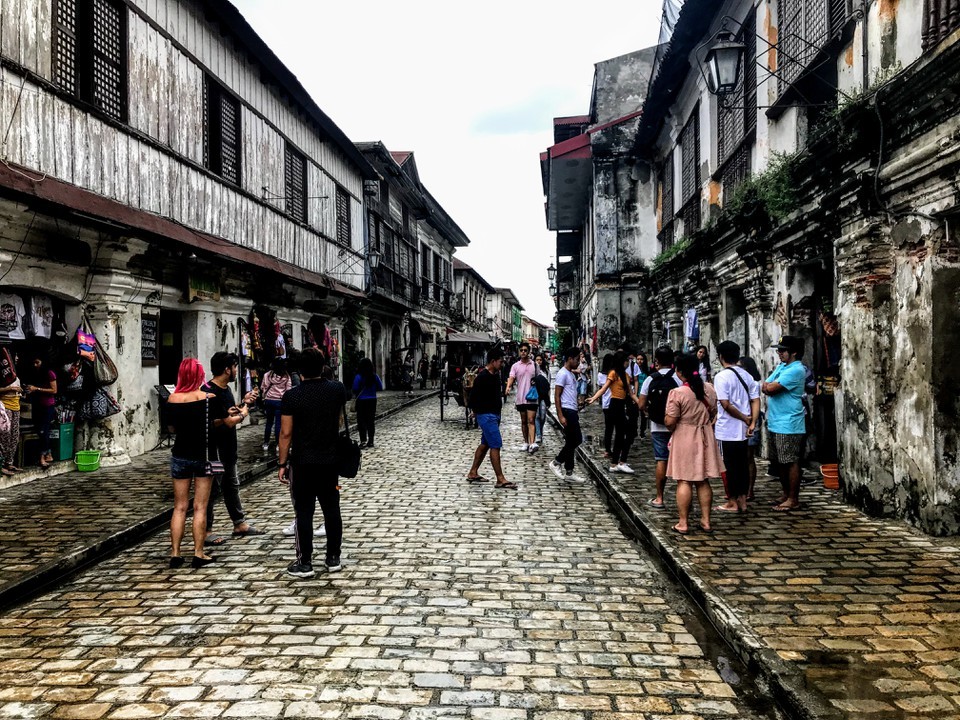 |
| Photo: Land of Size |
The city's full name at the time of its Spanish foundation was Villa Fernandina, or "Town of Ferdinand", in honor of Prince Ferdinand, the firstborn son of King Philip II of Spain. As the city grew, and the seat of the Archdiocese of Nueva Segovia transferred to Vigan, it was later renamed Ciudad Fernandina de Vigan ("Ferdinand's City of Vigan/Fernandine City of Vigan").
History of Vigan City
Vigan was an important coastal trading post in pre-colonial times.
Long before the Spanish galleons came, it was the Chinese junks who sailed first to Isla de Bigan through the Mestizo River. They came to barter exotic goods from Asian kingdoms in exchange for gold, beeswax, and other mountain products from the Cordilleras. Most Chinese settled in Vigan, intermarried with the natives, and started the multi-cultural bloodline of the Bigueños.
In 1572, King Philip II sent Captain Juan de Salcedo with about 80 soldiers to explore the coast of Los Ilocano that sailed from Manila to Vigan, according to Zen Rooms.
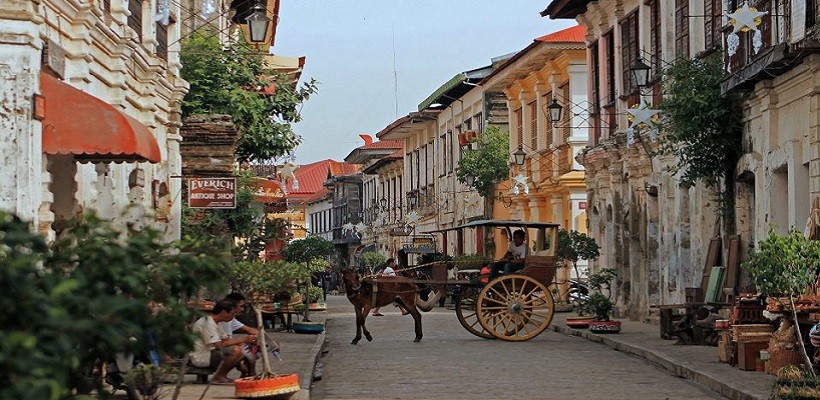 |
| Photo: Shutterstock |
After the successful expedition and exploration of the North, Captain Juan de Salcedo founded “Villa Fernandina de Vigan” in honor of King Philip II’s son, Prince Ferdinand who died at the age of four. Because of this, he was rewarded by the King with the old province of Ylocos which was then composed of the Ilocos Norte, Ilocos Sur, Abra, La Union, and some parts of the Mountain Province as his Encomienda and was accorded the title as Justicia Mayor de esta Provincia de Ylocos.
It was believed that when Salcedo asked a native what the name of the place is in Spanish, the native could not understand a word he was saying. Salcedo then pointed to the ground and the native thought that he was actually asking for the name of the vegetation planted on the ground. So the native said “bigaa apo, bigaa apo”, referring to a tuber plant from the “gabi” or taro family. From then on the Spaniards named the place Bigan.
In the 17th century, Vigan City witnessed one of the bloodiest wars in Philippine history—the revolt by Diego and Gabriela Silang against the Spaniards.
During World War II, Vigan came close to destruction at the hands of the Japanese, if not for a priest taking in the Filipino wife and child of the city’s Japanese military commander, on the condition that Vigan is spared.
But the battles didn’t stop there because after the war, in the 1970s, the town became a battleground again but this time, between political clans vying for control of Ilocos.
Best Tourist Attractions In Vigan City
1. Calle Crisologo
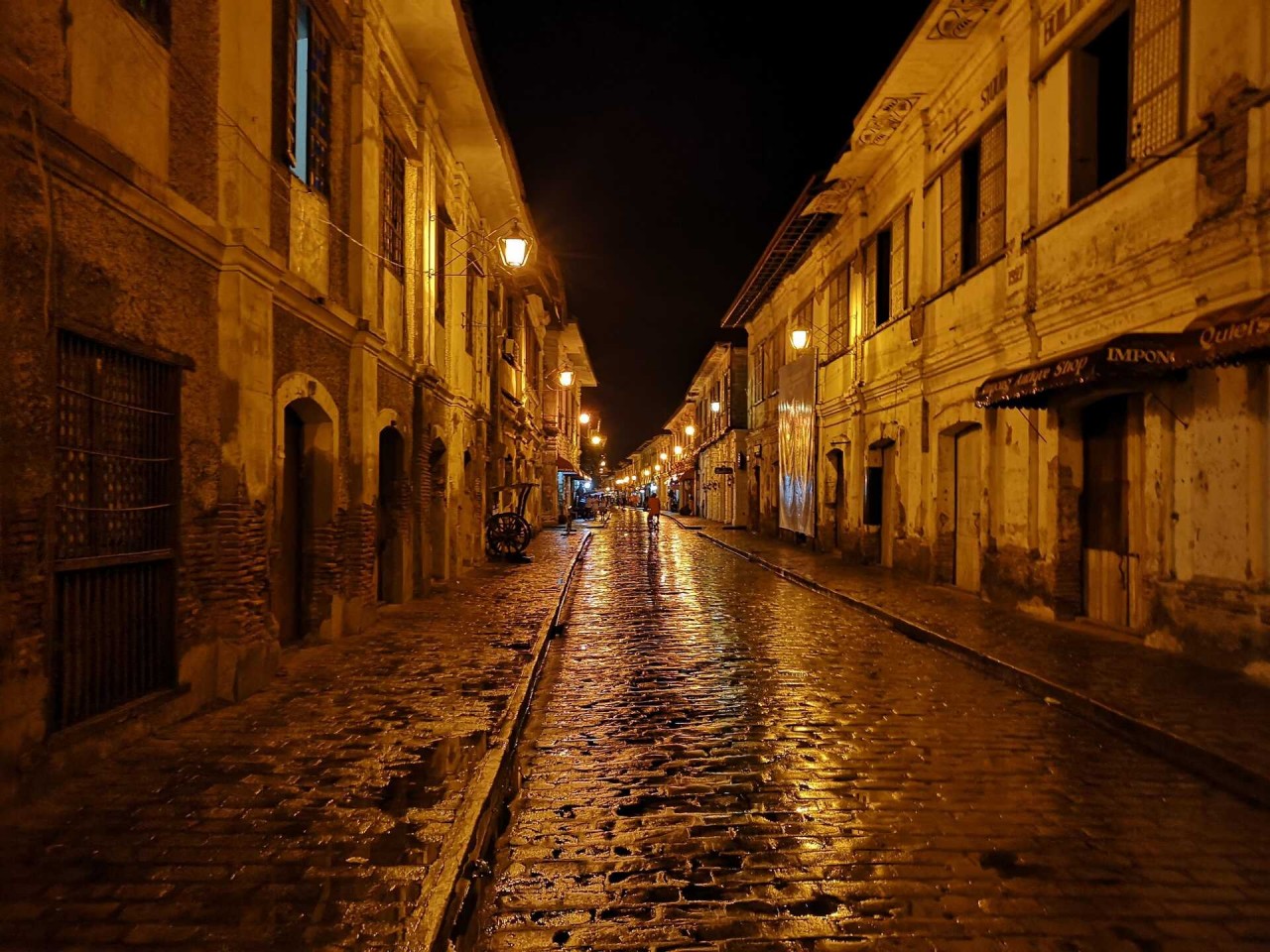 |
| Photo: Flickr |
As one of the best-preserved heritage sites in Vigan, Calle Crisologo boasts a unique atmosphere that would take you back in time. Heritage houses built centuries ago line up both sides of the street, depicting Spanish-influenced architecture preserved for several centuries. And with the site closed to vehicles, tourists can fully enjoy Calle Crisologo’s cobblestone street, according to Philippines Travel.
Many of the houses that line Calle Crisologo offer even more beyond their architectural marvels. Some have opened their houses to tourists who want to find out more about their stories, while others have been turned into retail stores that sell souvenirs and local delicacies. And of course, there are many locations around the street that’s perfect for a quick photo!
On top of its architectural and historical beauty, Calle Crisologo even has a dramatic love story behind it to add to its flair. A commonly told tale by local tour guides is that a Japanese general fell in love with a local Filipina, and this relationship was what spared Calle Crisologo, and the city of Vigan as a whole, from bombings during World War II. While it’s unknown what happened to the general and his lover, their love story continues to live on in Calle Crisologo’s towering structures!
2. Bantay Church Bell Tower
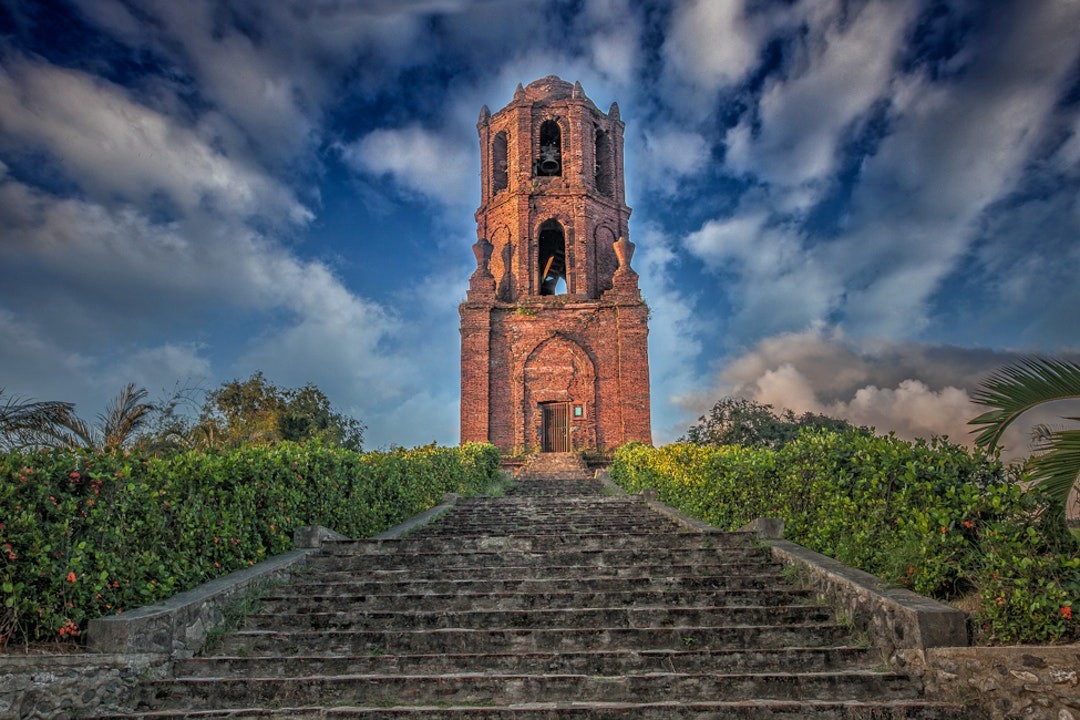 |
| Photo: Travel Philippines App |
One of Vigan’s most iconic symbols is the Bantay Bell Tower. First built in 1591, it served as the town’s watchtower before being turned into a bell tower by the nearby church in 1857. Located roughly 10 minutes from the town of Vigan, it’s located in the town of Bantay, Ilocos Sur, according to Primer.
It has looked over the town of both Bantay and Vigan for centuries and was known as Diego and Gabriela Silang’s favorite date spot during the 17th century. The bell tower is situated on a hill, making it the best vantage point for those who were assigned to watch over the towns of Vigan and Bantay.
Getting to the top of the bell tower is not as hard as you may think. You’ll need to sign a guestbook just before the entrance to the location of Bantay Bell tower. You can also donate any amount you wish before entering to ensure the bell tower is taken care of.
From there, a short walk is the only thing that separates you from the bell tower. Before you go up, make sure you take photos of yourself and the bell tower!
3. St. Paul’s Cathedral
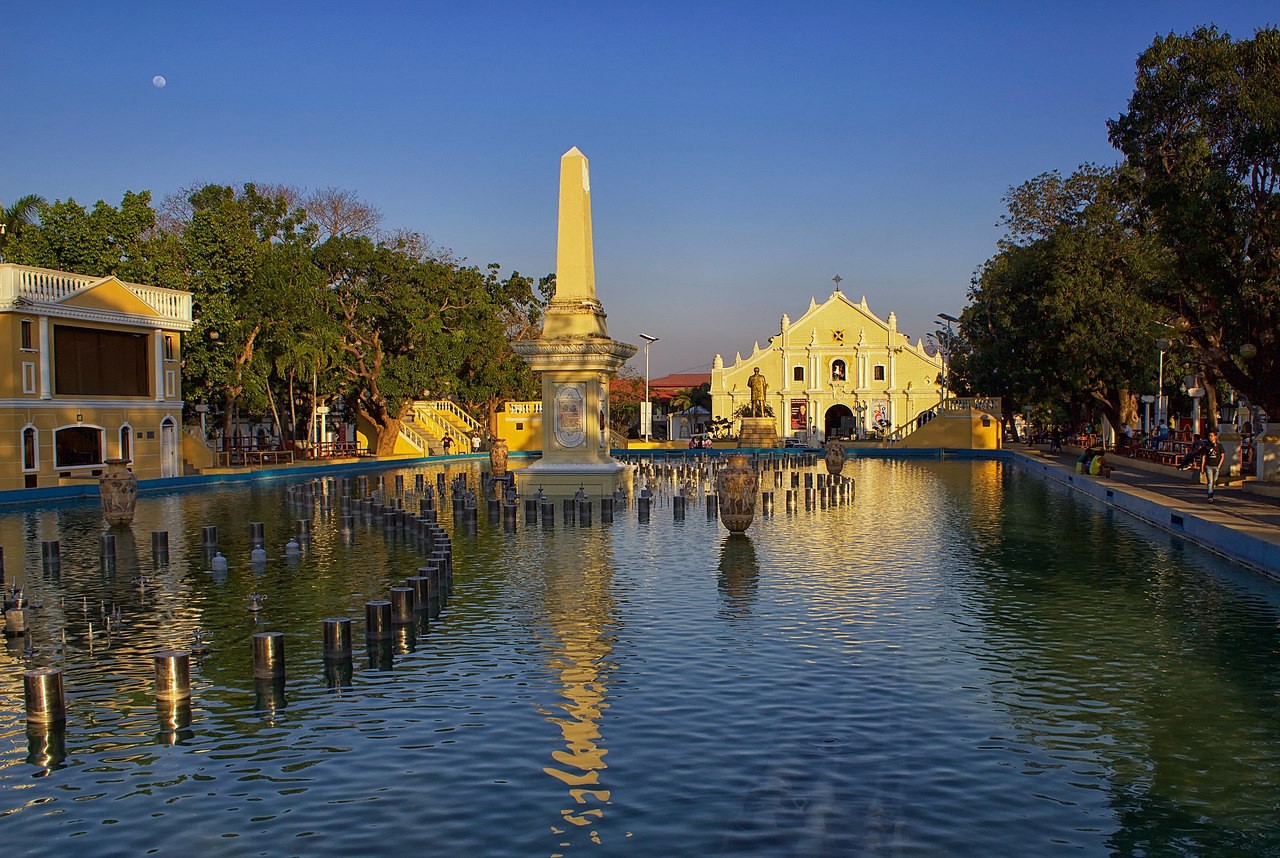 |
| Photo: Dreamtimes |
The St. Paul’s Cathedral is also known as the Metropolitan Cathedral. It is considered a major religious landmark not only of northern Luzon but the country as well. Visitors must include a visit to the cathedral when in Vigan as it has been a center of Roman Catholic devotion for centuries. The church as it stands now was completed in 1800. The original structure was built in 1574 upon the command of the Spanish founder of Vigan, Juan de Salcedo. It was a mere chapel then, made of wood and thatch. In 1641, the chapel was replaced by a church.
When the seat of the Nueva Segovia Diocese was transferred to Villa Fernandina de Vigan from Cagayan’s Lal-lo in 1758, the church was elevated to the status of a cathedral and became the center of the Catholic faith in the north. Another structure was ordered by then Governor Jose de Basco to be built to replace the existing church in 1786. With the Augustinians, the cornerstone of the new church was laid at the beginning of 1790, cited by Vigan.ph.
Overall, the cathedral follows a Baroque architectural design that has been modified by Ilocanos to strengthen the structure against earthquakes. This is now known as the earthquake Baroque. Testament to the style’s effectivity is the fact that the structure’s original interior walls have remained complete.
Other influences can be observed from the architecture of St. Paul Cathedral, that of neo-Gothic, pseudo-Romanesque, and Chinese craftsmanship. Facing the cathedral, visitors are greeted by the statue of St. Paul above the main opening. There are also carvings of Fu dogs or lion dogs by the outermost doors.
12 minor altars and brass communion handrails forged in China gives the inside of the church a feeling of grandeur. The area for the choir is located at the loft, making use of the big church’s acoustics.
4. Syquia Mansion Museum
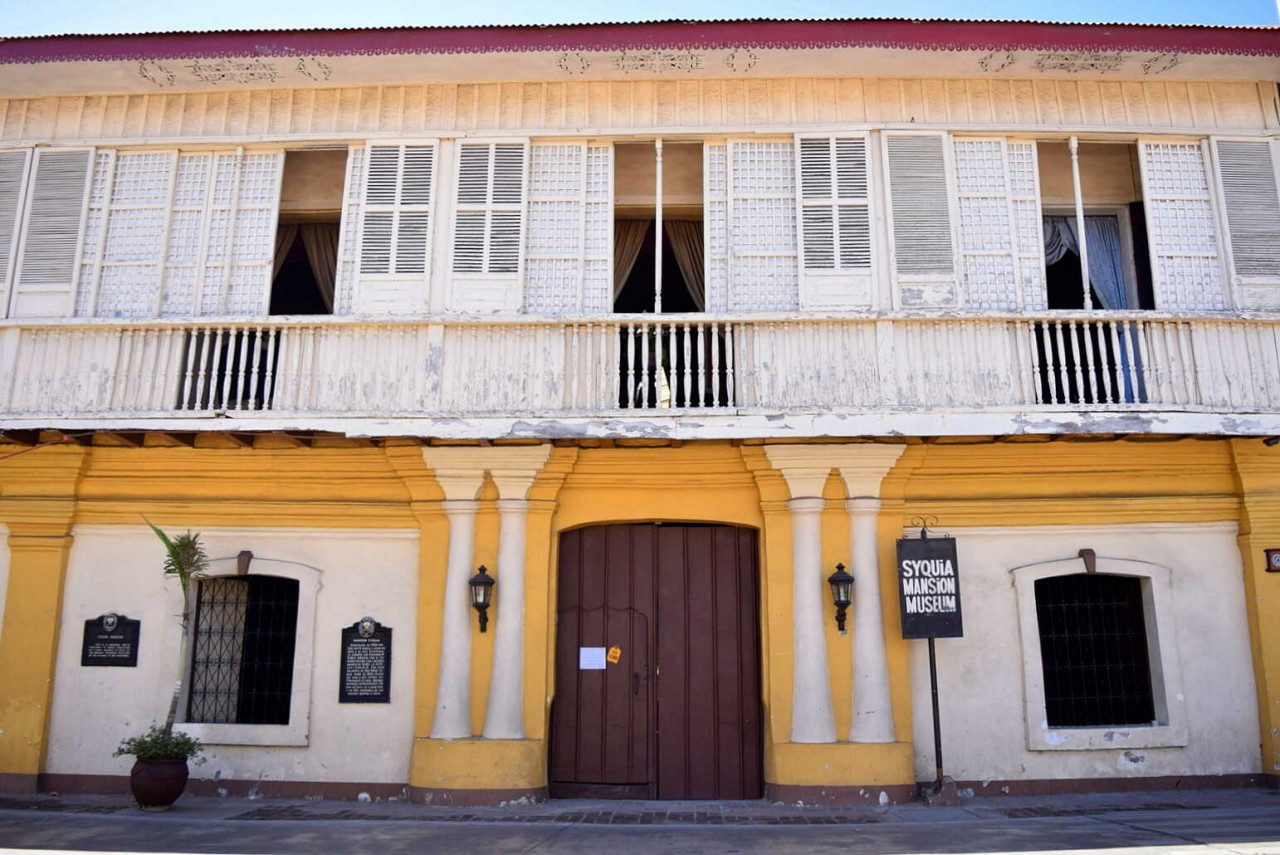 |
| Photo: Pinoy Adventurista |
Of the many historical landmarks you can find within Vigan, one that stands out above the rest is the Syquia Mansion. Once resided by the Syquia family, with one of its members marrying former Philippine president and Vigan native Elpidio Quirino, the Syquia Mansion has since been transformed into a public museum, displaying not only the various artifacts owned by the family and the late president but also an architectural marvel that best encapsulates Vigan’s unique charm, according to Philippines Travel App.
As an ancestral home turned museum, Syquia Mansion gives its visitors a rare glimpse into high-society Vigan life during the 1800s. Everything you see within the house tells a story over a century old, from its heirlooms to its holes.
Even before you enter, Syquia Mansion is already a treat for history and architecture buffs. The stone exterior’s design has been preserved for over a century, making it a true artifact from the Spanish colonial period. Those architectural feats extend to its interiors, with its unique stone walls and windows decorated with shells.
Entering its doors is like traveling back in time, as you’ll see dozens of artifacts, paintings, and furniture around the mansion. From the horse-drawn carriage right at the entrance to the family portraits painted by Fernando Amorsolo, one of the country’s national artists, the Syquia Mansion has a lot to offer!
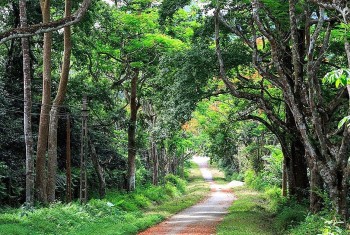 | Cuc Phuong Named Asia’s Leading National Park Cuc Phuong National Park, one of the most famous destinations in Vietnam, has been called "Asia's Leading National Park" at the 2021 World Travel Awards. |
 | "I Have Visited 90 Countries and Am Just Getting Started" At 40 most of us prefer to settle down. But one Vietnamese has chosen to fully embrace the life of a world traveller. |
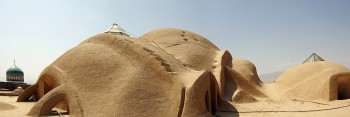 | Explore Bazaar of Kashan – The Oldest and Historical Structure Of Iran Iran, old land with many interesting tourist sites and attractions, charms first-time visitors with one of its oldest spots, the Bazaar of Kashan. |
Recommended
 World
World
Thailand Positions Itself As a Global Wellness Destination
 World
World
Indonesia Accelerates Procedures to Join OECD
 World
World
South Korea elects Lee Jae-myung president
 World
World
22nd Shangri-La Dialogue: Japan, Philippines boost defence cooperation
 World
World
Pakistan NCRC report explores emerging child rights issues
 World
World
"India has right to defend herself against terror," says German Foreign Minister, endorses Op Sindoor
 World
World
‘We stand with India’: Japan, UAE back New Delhi over its global outreach against terror
 World
World


